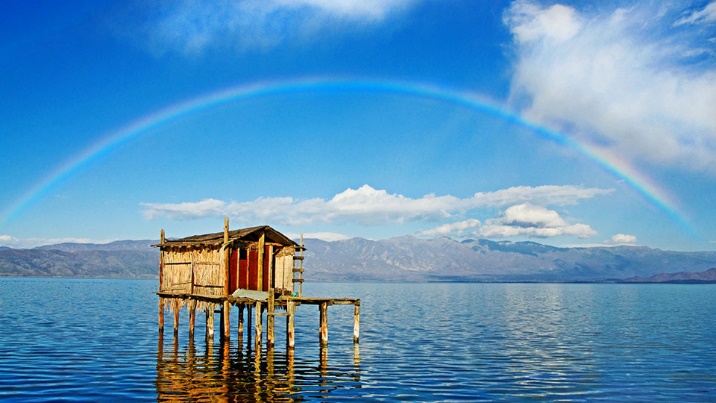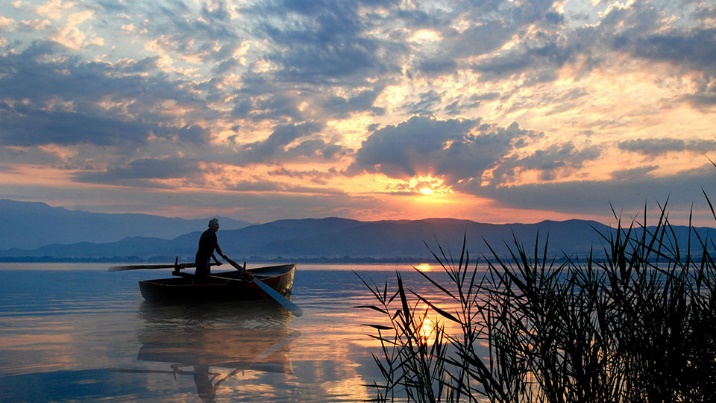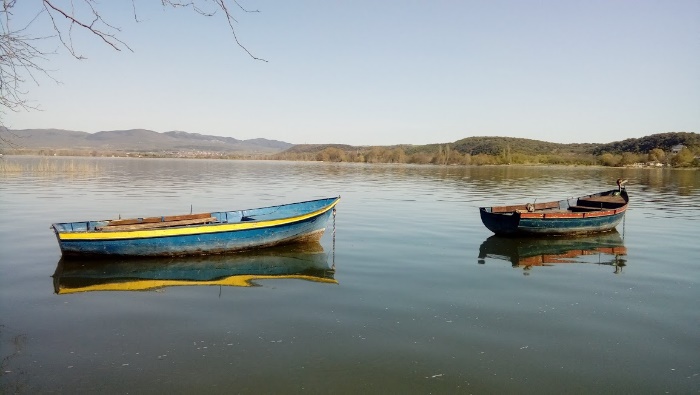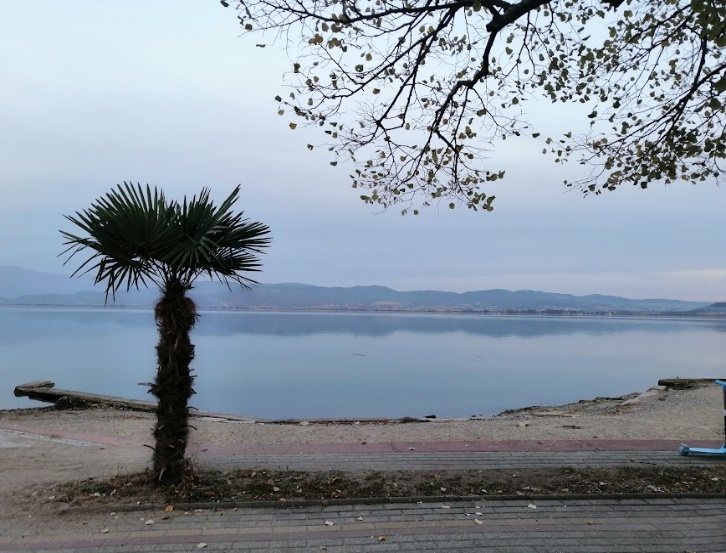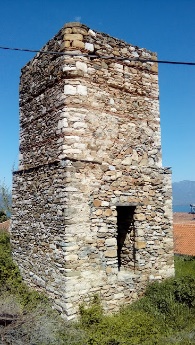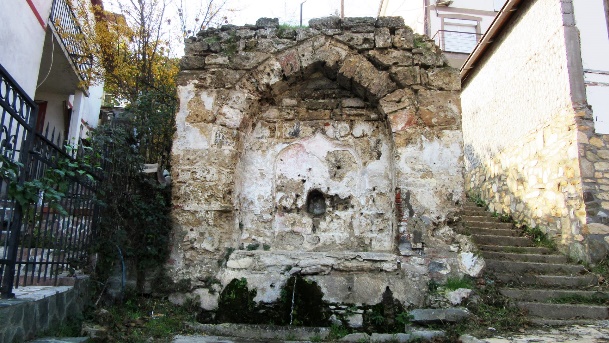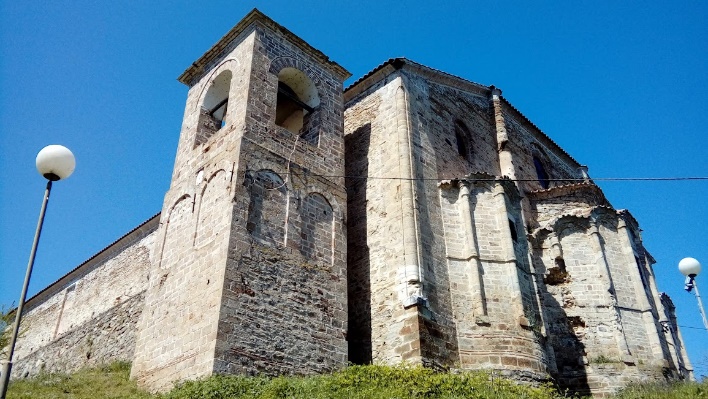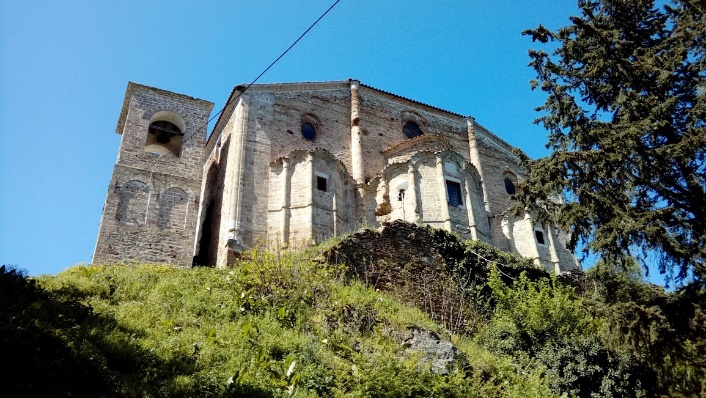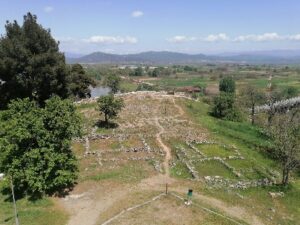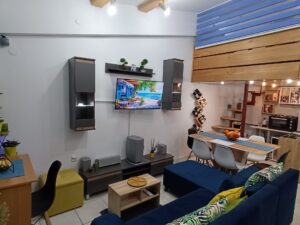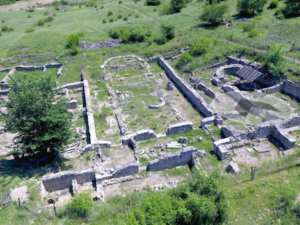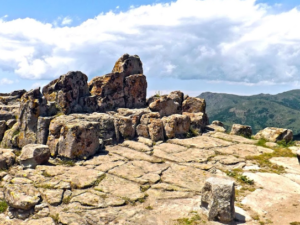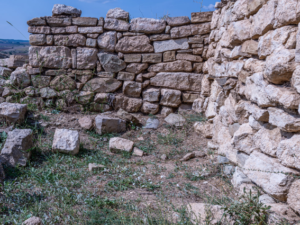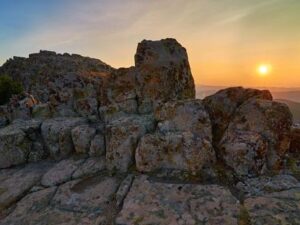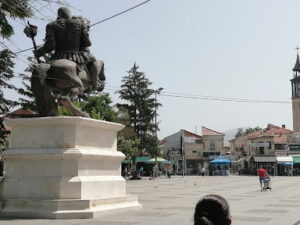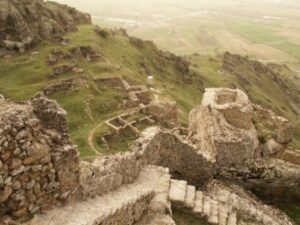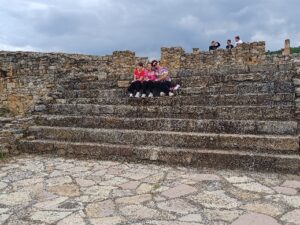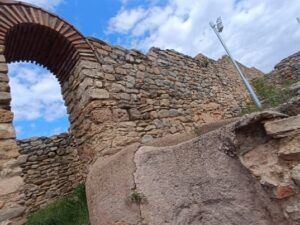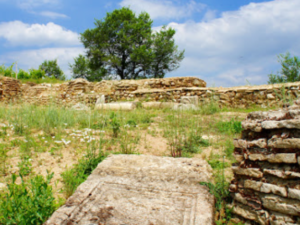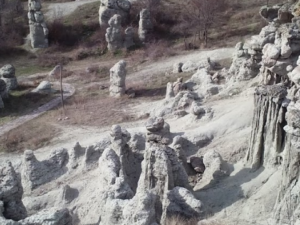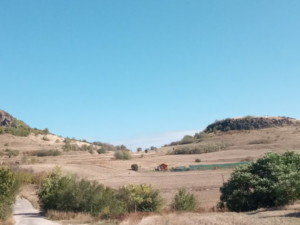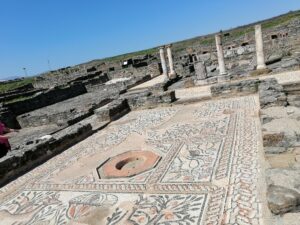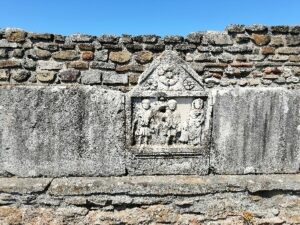There was a settlement in prehistoric times on the location of Dojran. The first written record of the city was in the 5th century BC, about the Paeonians who founded and expanded the city. They lived in settlements accessible only by boats, from which traces still exist today on the west and north shores of Lake Dojran, in between the cane zones and the lake itself. The lake is famous for its magical colors and algae which flourish in August and are very helpful for the skin. It is rich with fish, prepared deliciously in many restaurants in the city.
Dojran was the seat of a Roman Catholic bishop until it was conquered by the Ottoman Empire, when many monuments were built in the upper part of the city. There are located the Turkish Hamam (bath) and Shaykh Fountain.
The Church of St. Ilija was built in 1874 in the northern part of the city. The current fragments of paintings suggest that the church walls were originally covered with frescoes. There are numerous discoveries of of reliefs, marble plates with inscriptions, remainders of walls, coins and tombs with epitaphs in Dojran.



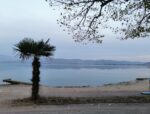

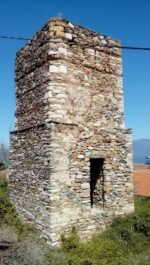



Tour 13. The city and magical lake Dojran
223 € 156 €
* price per tour (for all persons)
Enjoy in the magical colors of Lake Dojran and explore many monuments of the city of Dojran.
Category: Tours
Description
Related products
Tour 03.6 Adventure in Volcanic Eastern Macedonia – Kokino Neolithic Astronomy Observatory, Giant’s Ring of King Marko, The Big City, Cocev Kamen, The Stone Dolls
* price per tour (for all persons)
Adventure in Volcanic East Macedonia with visit and detailed explanations of - Kokino Megalithic Observatory and Neolithic Settlement on the high hills - Kostoperska (Zeglig) Volcanic Basalt Rock - The Giant’s Ring of King Marko - Archaeological Site of Golemo Gradishte (The Big City) - St.Jovan Rotonda Orthodox Christian Church - Archaeological Site and Megalithic Settlement Cocev Kamen - The Stone Dolls Site in village of Kuklici, Kratovo
Tour 06. Bylazora – the city of Paeonian kings
Tour 03.1 Adventure in Volcanic Eastern Macedonia – Kokino Neolithic Astronomy Observatory
Tour 11. Prilep, Marko’s Towers and Styberra
Tour 08. Bargala – Roman City and Center of Christianity
* price per tour (for all persons)
Explore the magnificient town Bargala, archaeological site east of the city of Shtip (ancient Astibo) with Thracian origin.
Bargala was an important religious and cultural centre of the middle Bregalnica region in the Roman province of Macedonia Secunda. In the 4th and 5th centuries, the prosperous city was the seat of a bishopric with a basilica complex at its centre and four more basilicas. Gold coins of Emperor Phokas (602-610) are discovered at the locality, as well as 6th and 7th century Slavic pottery.
Tour 05. Tauresium – Birth place of Justinian I
Tour 03.3 Adventure in Volcanic Eastern Macedonia – The Stone Dolls
Tour 07. Stobi – the ancient town of Paeonia and Macedonia
* price per tour (for all persons)
Explore the ancient town of Stobi in an innovative way. Stobi is an ancient Paeonian town, later conquered by Macedon, and finally turned into the capital of the Roman province of Macedonia Salutaris. It is located near Gradsko, North Macedonia, on the main road that leads from the Danube, Singidunum to the Aegean Sea, Thessaloniki and on the crossroad Via Egnatia, connecting Heraclea Lyncestis with Pautalia and Serdica. Stobi was built where the Erigon (Crna River) joins the Axios (Vardar), making it strategically important as a center for both trade and warfare.


